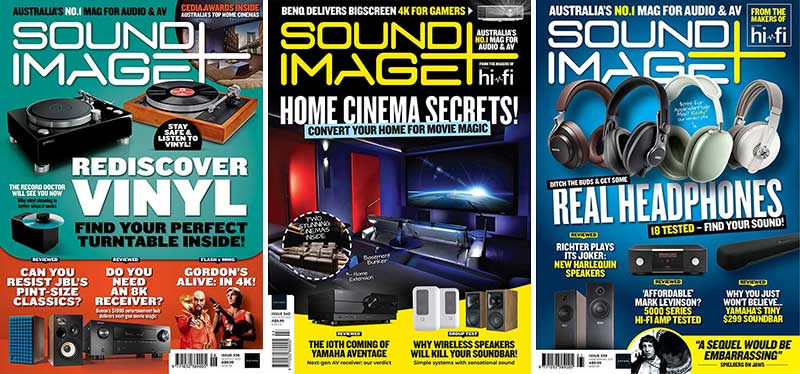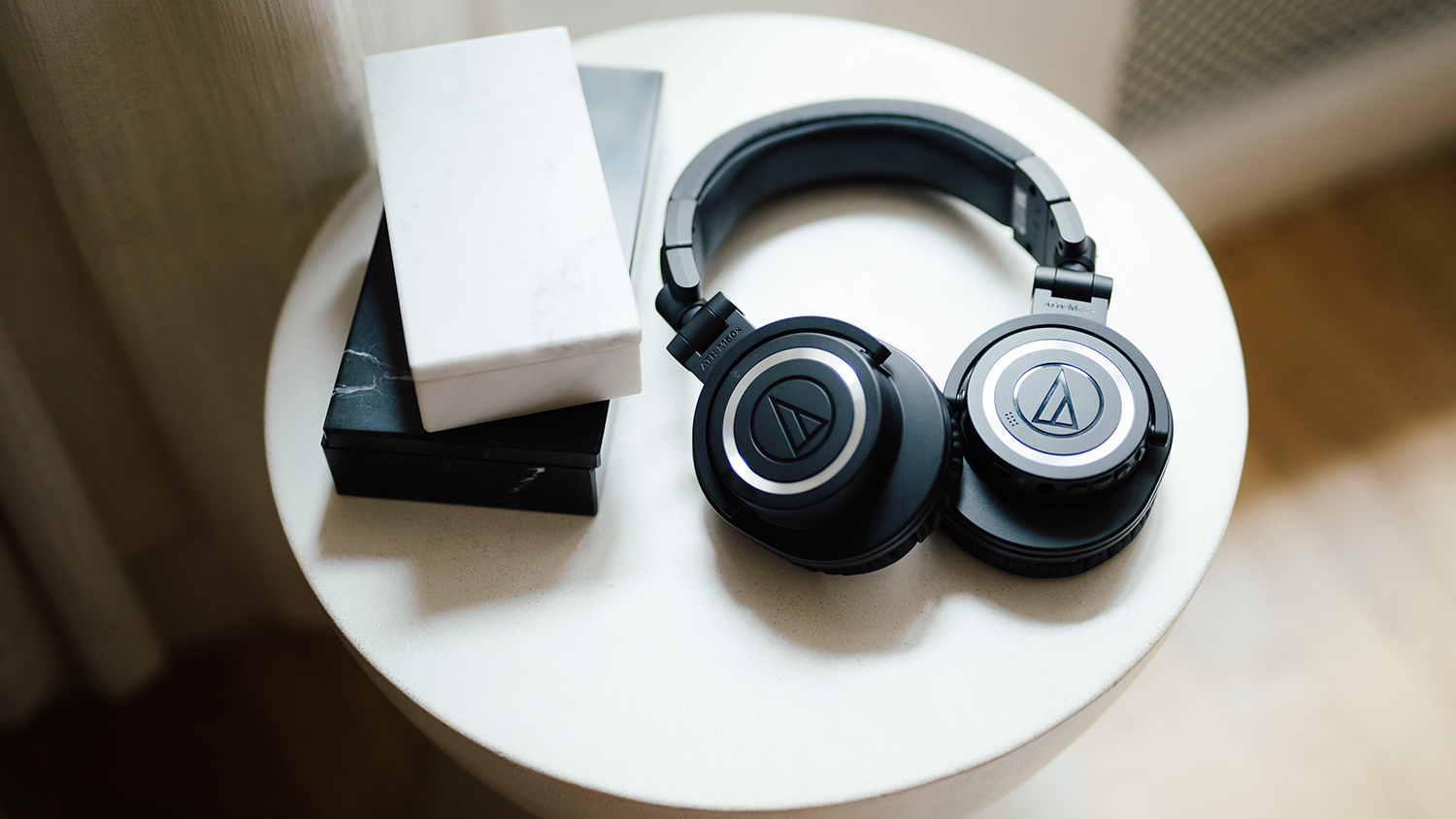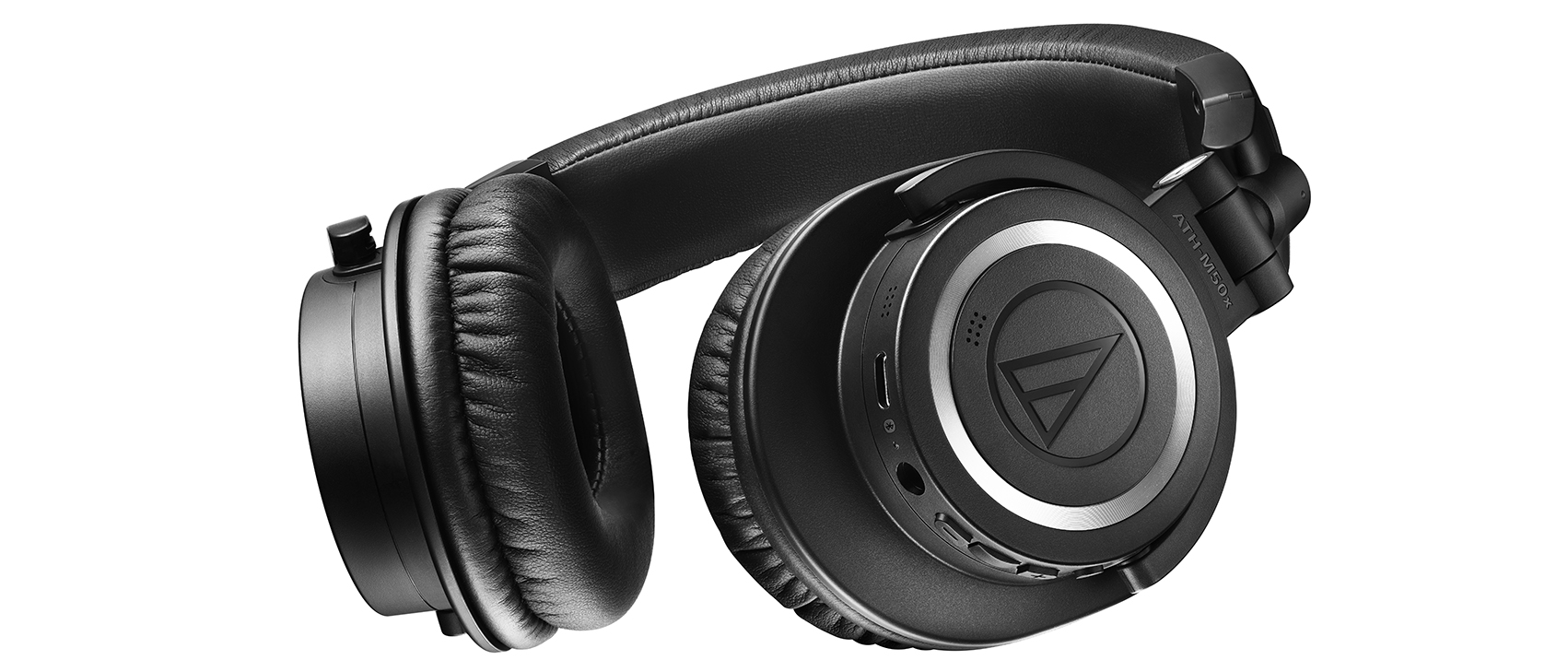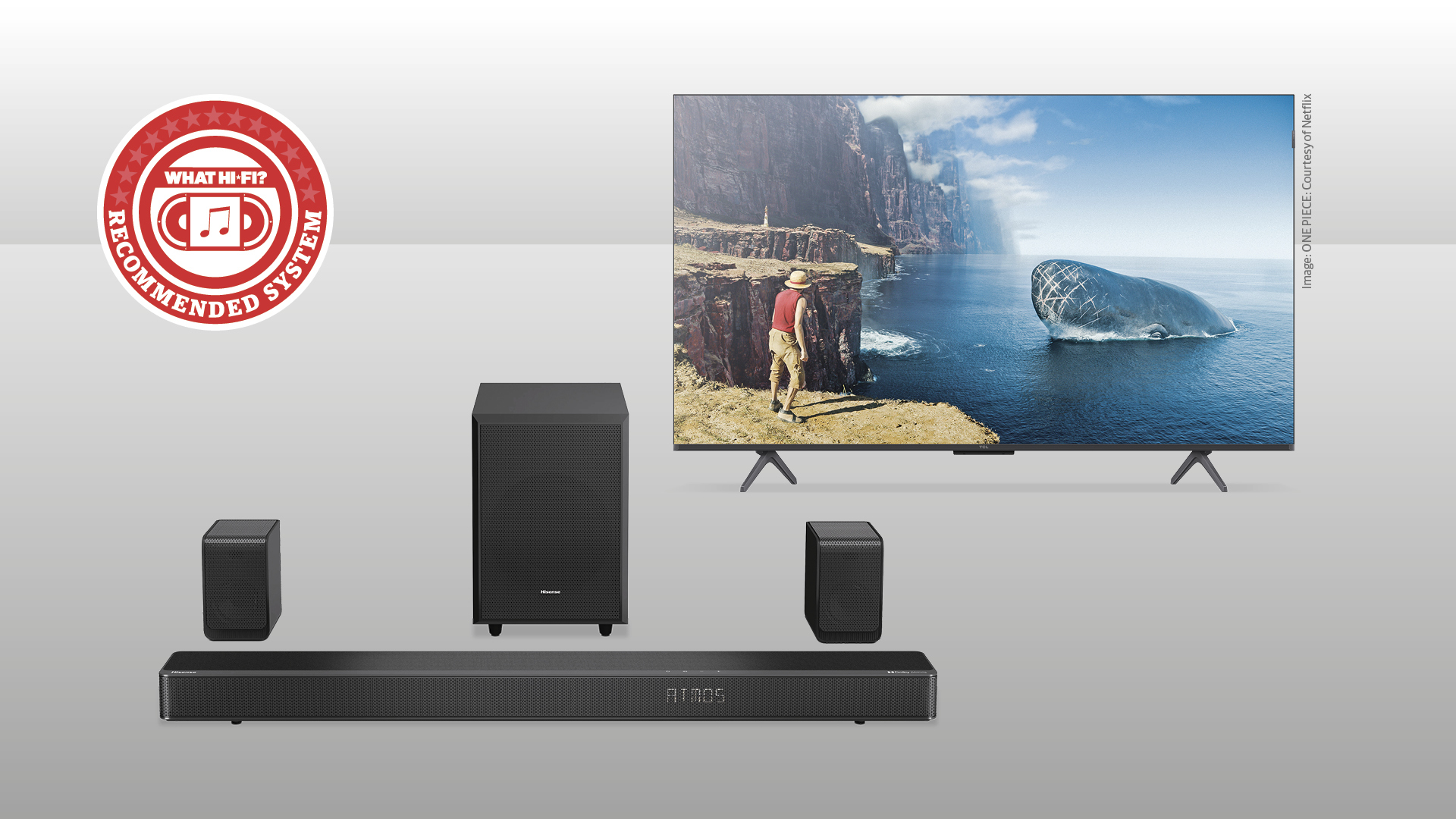Sound+Image Verdict
The latest Bluetooth version of Audio-Technica’s M50x design is another winner, with excellently strong and musical wireless performance, a top-notch build and overall great value for the price.
Pros
- +
Strong powerful sound
- +
Bluetooth as good as cabled
- +
Solid build
- +
Good price
Cons
- -
No noise-cancellation
Why you can trust What Hi-Fi?

This review originally appeared in Sound+Image magazine, one of What Hi-Fi?’s Australian sister publications. Click here for more information on Sound+Image, including digital editions and details on how you can subscribe.
Since its introduction during Audio-Technica’s 50th anniversary celebrations back in 2012, the M50x design has been widely lauded for both personal and studio monitoring use.
Not a year has gone by without a special or limited edition arriving with either technical tweaks or some new colour scheme – this year the latter was chosen by public vote, with the winning hue being a deep Jaffa ‘Lantern Glow’.
Indeed there have been so many versions of the M50 that the nomenclature has sometimes got a little out of hand. But here the BT2 at the end of the model name is unmistakable: these are Bluetooth versions, updating the original ATH-M50xBT version released in 2018.
No noise-cancelling
Wireless, then, but no noise-cancelling here, and to be honest, that can be a very good thing. Regular readers will know that sound quality invariably alters significantly when you flick the noise-cancelling switch, and that noise-cancelling is an inherently destructive process in sonic terms.
Yet with many users leaving NC on by default, designers often choose to voice such headphones to sound best when NC is engaged, leaving the non-NC modes sounding odd, even though the path is more pure.
We often end up saying such designs really only sound their best when you use a cable and turn off the electronics – not really a satisfactory recommendation when you’re buying a pair of wireless headphones!
So omitting NC, as here, can potentially assist the overall sound; there’s plenty of passive isolation anyway from a firm but not pressured fit, while it also, of course, saves money on the price, here pretty good at AU$349, which is the same as its predecessor and only AU$70 over the price for the cabled M50x.
The latest hi-fi, home cinema and tech news, reviews, buying advice and deals, direct to your inbox.
The M50xBT2s arrive in a straightforward rather than luxurious box, with very minimal use of plastic, a folded soft bag rather than a solid case, and inside that bag a double-ended minijack cable for wired use, and a USB-C charging cable, which we immediately employed to top up whatever charge they had shipped with. Audio-Technica quotes up to 50 hours of continuous use on a full charge, and a useful three hours on a 10-minute rapid charge.

These headphones are, given their proposed portable use, not to mention their monitoring heritage, a closed-back design, built solidly of primarily strong plastic but with an adjustable steel headband, and a soft leatherette for the earpads and a full wrap of the headband, blessed with oversized 45mm drivers, mobile-friendly 38-ohm impedance and sensitivity of 99dB/W/m. The frequency response is quoted at 15Hz up to a high-res-capable 28kHz, no envelope stated, and a microphone allows call-taking.
The choice of Bluetooth codecs for music is interesting: the base-level SBC, of course, and the Apple-friendly AAC codec for something rather better, while the third option is not one of the common aptX variants but rather Sony’s LDAC.
This has been incorporated into Android Oreo 8.0 and above, but surprisingly few phone manufacturers are actually activating it, perhaps because it requires a licence from Sony, albeit a free one. You can, however, activate it yourself (details here: https://tinyurl.com/activateLDAC). Android phone users can also benefit from the support here for Google Fast Pair.
LDAC can potentially deliver lossy high-res audio wirelessly, if you connect at its maximum 990kbps. If your connection quality drops, however, so can the LDAC speed – down to 660kbps or 330kbps, the latter two taking you below CD quality. If you force the higher quality, you may get drop-outs.
Performance
Our opinion? – most of this is over-rated anyway. Apple device owners will be listening below CD quality with AAC, and we don’t reckon they’ll even notice. That’s because the sound here is big and bold, surprisingly so for a monitoring headphone derivative. But there’s also a lesson in patience here – do not judge these headphones the first time you plug them in.
For their first few hours playing we thought them bass-dominated and rather thick. We left them running and the next day forgot we’d thought that and merely considered the bass to be very full. We then left them playing for days via cable to run in. By the end of the week things had settled into the general kick-arse attitude which we continued to enjoy until the end of our listening.
Their solidity of sound is a tonic for classic rock, but they also achieve excellent clarity and openness, partly thanks to a quality DAC inside, partly from the oversized 45mm driver. Something as well-played as the Steve Miller Bands’ The Joker is opened up into a wide soundstage, the lead and harmony vocals well-toned, positioned and differentiated, as are each and every instrument in their place.
The metal of the guitar strings opening REM’s Drive is wonderfully edgy, and transitions perfectly to the full chords that follow, with the mix so clear you can follow the echo tricks employed on Stipe’s vocal – medium-length echo for most of it, but taken out for intimate line-enders. Bass guitar is rock-solid but doesn’t bloat up to intrude upon the rest of the frequency range.
It is a ‘closed’ sound; play classical pieces and there’s little sense of the ambience in a recording, and strings are softened rather than made brilliant. Play Keith Jarrett’s ‘Köln Concert’ and the piano notes have sufficient attack, but the sense of venue is largely absent, losing the space in which his little moans and foot-pedal thumps can be heard on more revealing systems and headphones.

With most music, however, this doesn’t prevent enjoying a good guitar jangle, nor does it reduce vocal cut-through; all these things are enjoyably well balanced. Meanwhile there’s that bass – solid and not pushed. A 20-200Hz bass sweep sounded completely flat, not a bump or trough to be heard. Very rare.
This translates into solid and unbloated performance down low. Youngsters today think they have the monopoly on bonkers bass, but a trip back to 1996’s ‘The Chakra Journey’ compilation under Return to the Source’s club label will soon put them right.
The depth of the electronica here can overwhelm headphones that have been tuned to bass excess, but the M50xBT2 simply rolls the stuff out, keeping the bass pulsing deep but tight in support of all the rising tribal hands-in-the-air fizziness.
There’s no shortage of available level via Bluetooth either, so that by the time you’re through Green Nuns of the Revolution’s Plexus Fire it feels like your head’s been to Goa and back. Thankfully the second CD is all ambient chill; we needed that.
So good was the Bluetooth performance here, so lacking in anything to criticise, that we almost forgot to try them with a cable. When we did so, passively (as there seems no option to power them up under cabled operation), we didn’t hear the usual improved clarity.
There was perhaps a little more punch and high-end openness, but if anything we preferred the frequency balance via Bluetooth as the cabled bass seemed more enveloping, perhaps a tad too strong. Preferring Bluetooth over cabled sound is another great rarity, and shows how very well tuned the M50xBT2 headphones are for their primary purpose.

Final verdict
The importance of the M50x to Audio-Technica’s brand can be gauged by them having a category of their own at Audio-Technica.com.au, above Headphones, Microphones and Turntables, indeed.
The ATH-M50xBT2 can only continue that success – they are solid, strong, wonderfully musical, perfectly and powerfully tuned for wireless operation. Highly recommended.

Jez is the Editor of Sound+Image magazine, having inhabited that role since 2006, more or less a lustrum after departing his UK homeland to adopt an additional nationality under the more favourable climes and skies of Australia. Prior to his desertion he was Editor of the UK's Stuff magazine, and before that Editor of What Hi-Fi? magazine, and before that of the erstwhile Audiophile magazine and of Electronics Today International. He makes music as well as enjoying it, is alarmingly wedded to the notion that Led Zeppelin remains the highest point of rock'n'roll yet attained, though remains willing to assess modern pretenders. He lives in a modest shack on Sydney's Northern Beaches with his Canadian wife Deanna, a rescue greyhound called Jewels, and an assortment of changing wildlife under care. If you're seeking his articles by clicking this profile, you'll see far more of them by switching to the Australian version of WHF.

